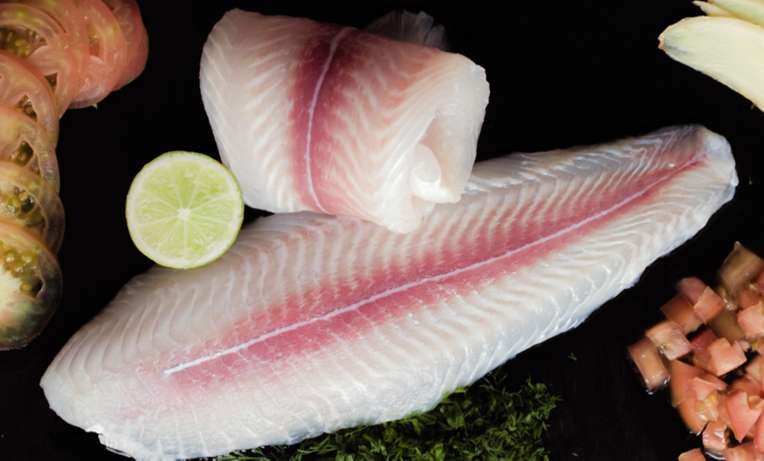
Pangasius is an excellent fish for carnivores. It’s relatively inexpensive, high in protein and lower in fat than most other meats. And, it’s caught wild and sustainably farmed, so there are no concerns about overfishing or the sustainability of the supply chain. If you’ve never tried pangasius before, now may be the perfect time to do so. The cost of pangasius has been steadily decreasing in recent years, making it easier than ever to obtain this meat at a fair price. In addition, more supermarkets are stocking more varieties of pangasius, which means that your search for this fish won’t have to be as exhaustive as it once was. But what makes pangasius so perfect? Here are our top tips for buying pangasius fillet with confidence:
Know your fishmonger
There are a few things you should know about your pangasius fishmonger before making your first trip to the fish counter. First, find out which store carries the pangasius that you’re interested in purchasing. Does your local shop only sell frozen pangasius? This is important because pangasius fillet is sold as fresh, and therefore should be eaten within three days of purchasing. If your store only stocks frozen pangasius, then you’ll almost certainly have to make another trip before you’re able to purchase anything. Next, ask the fishmonger if she or he carries any other meats besides pangasius. If you only want to buy pangasius, it wouldn’t be too awkward to ask the grocer if you could have your regular grocery order substituted with something more exotic. But you don’t want to buy something else because you don’t realize that it comes with the same price tag. Make sure that the store you shop at has a comprehensive selection of meats.
Buy frozen
Pangasius is one of the best fish for the freezer. It’s lower in fat than other fish and is relatively mild in flavour, so it’s easy to make it taste great when frozen. And, you can freeze pangasius fillets for up to a year. This means that you can stock up on pangasius when it’s cheap and inexpensive—like during the off-season or in the months before you think it will be fresh—and then save it for later when it’s even cheaper. Pangasius is now available in frozen forms from Asian markets and some supermarkets. Frozen pangasius fillets are just as affordable as fresh pangasius, but lack the flavour, texture and aroma of the fresh meat. Fortunately, those things aren’t essential to the food we eat. Keeping frozen pangasius in your freezer will provide you with a reliable source of protein when you need it most.
Ask for the freshest and best quality you can afford
You’ve probably been told that pangasius is low in fat, but what does that really mean? That pangasius fillet is low in fat? Or that it’s low in fat in relation to the weight of the whole fish? The latter is more useful. Fat is an important component of any meat. And, while pangasius is low in saturated fat, it’s also fairly high in cholesterol and sodium. This means that pangasius is still good for your health but is not a good choice for those who are looking for a low-fat diet. The best quality pangasius you can afford is better for your health and tastes better. If you’re on a budget, aim for the best quality pangasius you can afford. Pick something that smells like the ocean, not like a fish tank. That way, you can be sure that the fish you’re eating has been stored properly in a clean, oxygen-rich environment.
Don’t be afraid to ask for more meat and less fat
As you’re comparing pangasius fillet prices, keep in mind that it’s okay to ask the cashier to go back to the fish counter once or twice. You may want to ask for a different brand or ask to be weighed so that you can make sure you’re getting the same amount of meat as you paid for. When you finally get to the cashier, don’t be afraid to ask for more meat and less fat. You may actually be able to get a whole fish, free of any added fats or chemicals. But be careful. Some fish counters have a policy that you cannot get less than a whole fish. Never eat the head or tail of any fish. These parts are often full of bones, cartilage and other inedible parts that need to be thrown away. And, don’t eat any bones that you’ve accidentally swallowed.
Check the bottom of the fillet to make sure it’s solid
When you’re checking the bottom of the fillet to make sure it’s solid, you need to be sure that the bottom of the fish is completely submerged. This is a good way to ensure that the bottom of the fish is not covered in any fats or oils that would make it less healthy. If the bottom of the fillet is not submerged, then it’s not solid. In this case, you may want to purchase the whole fish instead of the fillet. This way, you’ll be able to make sure that the bottom of the fish is covered in water. If the bottom is covered in oil or fat, then you don’t want to purchase the whole fish. Instead, wait for the next fresh fish that you’d like to purchase.
Wrap your purchase securely when transporting
When you’re picking up your purchase from the fish counter, make sure you wrap it securely. The best way to do this is to put your purchase in a grocery bag, with the fish sticking out of the top of the bag. Then, put this bag in the trunk of your car. This way, the fish will be safe from any harm that might occur during a car accident. But, be careful. You don’t want to suffocate your pangasius fillet in the trunk because the bag may be too full, blocking oxygen from reaching the fillet. The fish should be able to float, with only its head sticking out of the bag and the air flowing through the bag and not directly on to the fish.
Dump the bones immediately after purchasing
If you have a choice, it’s better to buy whole pangasius fish than fillets. Why? Because it’s easier to dump the bones once you get home. If you buy fillets, you’ll have to cut the fish and then dump the bones out of the garbage disposal or sink. Whichever method you pick, make sure that you dump the bones immediately after purchasing. You don’t want the fish to start smelling or emitting any putrid odours. If you must leave the fish in the store for some reason, then make sure that it’s covered with a cloth or kept in a closed container. If the fish starts to emit any unpleasant odours, use the garbage disposal or sink to dispose of it.
Store pangasius in an airtight container at room temperature or below. Do not refrigerate.
When you’re ready to eat pangasius, you don’t have to cook it. But, you do need to store it properly in order to maintain its quality and flavour. Pangasius should always be eaten as soon as you buy it, so make sure that it’s stored in an airtight container at room temperature or below. It should also be consumed within three days. Storing pangasius properly will ensure that the fish retains its taste and texture, while preventing it from spoiling. If you can’t consume the fish in three days, you can store it in the freezer for up to a year.
Summary
If you’ve never tried pangasius before, now may be the perfect time to do so. The cost of pangasius has been steadily decreasing



